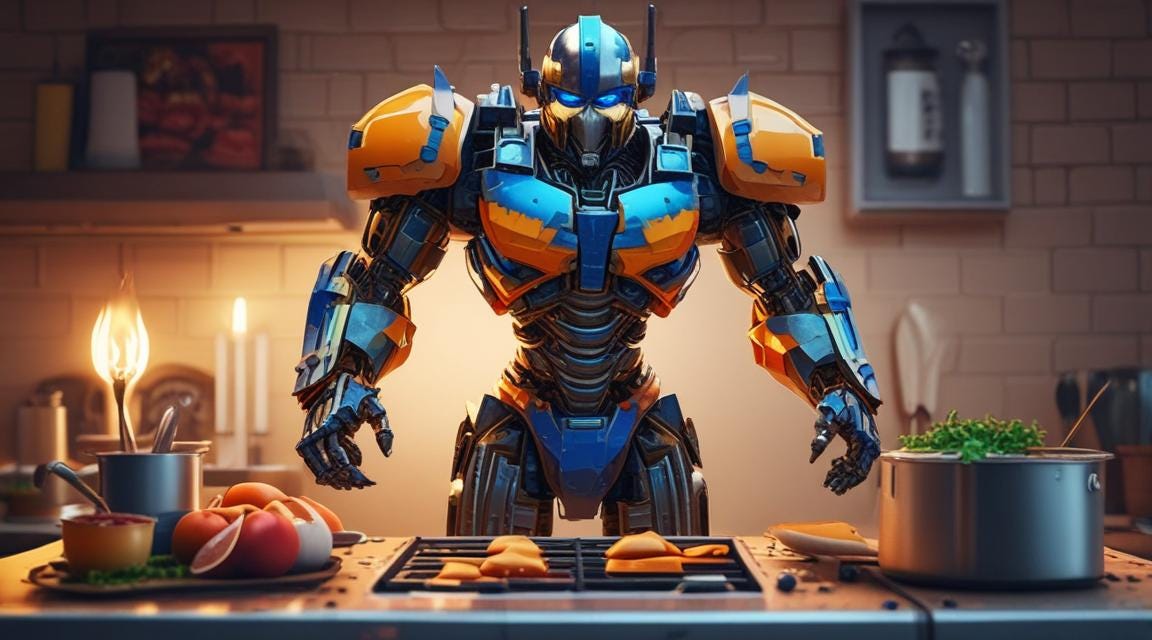Cooking Up AI: How Transformers Are Revolutionizing Language Models 🍳
Blending Ingredients and Ideas: How Transformers Cook Up a New Era in Artificial Intelligence
Dear NeuroEvolution Community,
In recent years, a groundbreaking innovation called the Transformer has taken the world of Artificial Intelligence (AI) by storm. From powering cutting-edge language models like GPT to enabling breakthroughs in fields as diverse as protein folding and game playing, Transformers have become the go-to architecture for AI researchers and practitioners alike.

But what exactly are Transformers, and why are they so revolutionary? In this newsletter, we'll break down the key concepts behind this game-changing technology through a cooking analogy, making it accessible to everyone—even if you don't have a background in AI or computer science.
The Magic of Self-Attention 🍲
Imagine you're a chef in a cooking competition. Each ingredient you receive represents a word in a sentence. Just as each ingredient has its own flavor, texture, and color, each word has unique characteristics, captured by a numerical representation called an embedding.
As you plan your dish, you carefully consider how these ingredients will interact, blending flavors and textures to create a harmonious dish. Similarly, a Transformer model uses self-attention to mix these word embeddings, understanding how they relate to each other to create a coherent 'dish'—or in this case, a meaningful sentence.
This process is revolutionary because it allows the model to capture the intricate relationships between ingredients (words) that might be far apart in the recipe (sentence). Before Transformers, AI models struggled to create such nuanced and complex 'dishes,' limiting their ability to generate truly human-like text.
Building the Perfect Dish, Step by Step 🥘
Think of a Transformer model as a multi-course meal, where each course builds upon the previous one. The model is made up of multiple Transformer blocks stacked on top of each other, with each block acting as a stage in the meal preparation.
Just as you might start with a base sauce and gradually add spices and other ingredients to deepen the flavor, the model starts with basic word embeddings and refines them through each block. Each 'course' (block) enhances the dish's complexity, ensuring that every ingredient is perfectly balanced with the others. This iterative process results in a dish that is both sophisticated and harmonious—a well-understood and contextually rich sentence.
Cooking with Precision and Creativity 🍳
If you're interested in trying your hand at being an AI chef, interactive tools can let you see how a Transformer model works behind the scenes. These tools allow you to input your own text and observe how the model 'cooks' it step-by-step.
For example, adjusting the temperature parameter is like a chef experimenting with spice levels. A lower temperature produces a milder, more predictable flavor, while a higher temperature can create a bolder, more adventurous dish (or, in AI terms, more creative text). Exploring attention maps can show you exactly which 'ingredients' (words) the model is focusing on at each stage of the cooking process.
Check this interactive tool created by Georgia Institute of Technology
From the Kitchen to the Real World 🌍
Transformers aren't just a theoretical concept—they're making a real impact across various industries. From improving language translation to advancing medical research, the 'dishes' prepared by these AI chefs are transforming the way we approach problems and find solutions. The revolutionary nature of Transformers lies in their ability to understand and generate human-like text, which has profound implications for the future of AI.
We hope this newsletter has given you a taste of the exciting advancements happening in AI thanks to Transformers. Just like in cooking, the art of AI is about blending ingredients thoughtfully to create something truly special.
Key Takeaways 📌
Transformers use self-attention to understand relationships between words, similar to how a chef balances flavors in a dish.
The model processes information through multiple layers, refining understanding at each stage, like preparing a multi-course meal.
Adjusting parameters in Transformer models is akin to a chef fine-tuning recipes for different results.
Transformers have wide-ranging real-world applications, from language translation to medical research.
Stay curious, experiment, and let’s build the future together! 🧑🍳
Did you find this explanation helpful? Let me know in the comments! And if you're hungry for more AI insights, don't forget to subscribe to our newsletter.



